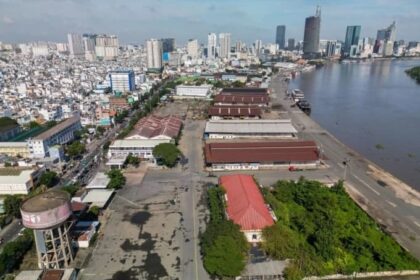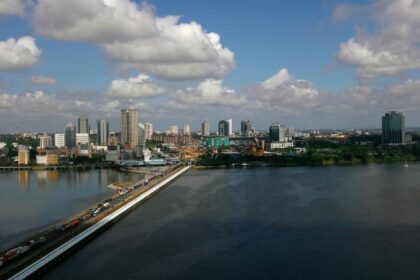Thailand’s Demographic Shift: Elderly Outnumber Youth for the First Time
Thailand has reached a historic demographic milestone: for the first time, the number of people aged 60 and above has surpassed those under 15. According to a recent analysis by the Geo-Informatics and Space Technology Development Agency (GISTDA), as of 2025, there are 13.6 million Thais aged 60 or older, compared to just 9.5 million children under 15. This marks Thailand’s official entry into the ranks of “ultra-aged” societies—a status that brings profound social, economic, and policy implications.
- Thailand’s Demographic Shift: Elderly Outnumber Youth for the First Time
- Regional Disparities: A Patchwork of Ageing and Youth
- Why Is Thailand Ageing So Rapidly?
- Economic Impacts: From Demographic Dividend to Silver Economy
- Healthcare System Under Pressure: Challenges and Innovations
- Policy Responses: Planning for an Age-Inclusive Future
- Social and Gender Dimensions: Women and Intergenerational Solidarity
- Opportunities in Real Estate, Tourism, and the Silver Market
- Broader Regional and Global Context
- In Summary
This demographic transformation is not unique to Thailand, but the speed and scale of the shift are particularly striking given the country’s middle-income status. The trend reflects decades of declining birth rates and increasing life expectancy, mirroring patterns seen across much of East and Southeast Asia. However, Thailand’s rapid transition is occurring at a lower income level than in countries like Japan or Singapore, raising urgent questions about how the nation will adapt.
Regional Disparities: A Patchwork of Ageing and Youth
GISTDA’s population “Insight Map” reveals stark regional differences in Thailand’s demographic structure. The north and central regions now have the highest ageing index, with many provinces showing a significantly higher proportion of elderly people than children. These areas are described as “clearly aged,” reflecting a complete shift in their social fabric. The northeast, too, is rapidly ageing, driven by the migration of working-age adults to urban centers and persistently low birth rates. This region is on track to become a “super-aged society” within the next decade.
In contrast, the eastern region maintains a higher density of working-age residents and a smaller proportion of elderly people. Meanwhile, the western border and lower south—including provinces like Tak, Kanchanaburi, Yala, Pattani, and Narathiwat—are among the few remaining “child-led” areas, where youth still outnumber the elderly. These regional divides highlight the complexity of Thailand’s demographic landscape and the need for tailored policy responses.
Why Is Thailand Ageing So Rapidly?
The roots of Thailand’s demographic shift lie in a dramatic decline in fertility rates and sustained improvements in health and longevity. In the 1970s, Thai women had an average of five or more children. By the 1990s, fertility had dropped to replacement level (about 2.1 children per woman), and today it stands at around 1.5—well below replacement. This mirrors trends across the Asia-Pacific region, where nearly all countries are projected to have below-replacement fertility by 2050.
At the same time, life expectancy has risen steadily, thanks to advances in healthcare, nutrition, and living standards. As a result, the share of older adults in Thailand has soared, and the median age has climbed to about 40. The United Nations projects that by 2050, nearly one in three Thais will be over 60, making Thailand one of the world’s most rapidly ageing societies.
Economic Impacts: From Demographic Dividend to Silver Economy
Thailand’s ageing population presents both challenges and opportunities for the economy. On the one hand, a shrinking workforce means fewer people to support a growing base of retirees, potentially leading to labor shortages, slower economic growth, and increased fiscal pressure on social welfare systems. The World Bank estimates that demographic changes will account for more than half of the projected decline in Thailand’s long-term economic growth between 2020 and 2050.
As the working-age population contracts—from 43.2 million in 2020 to an estimated 36.5 million in 2040—the ratio of workers to retirees will fall sharply. This could drive up labor costs, reduce productivity, and strain the country’s competitiveness. The government’s fiscal burden is also set to rise, with combined costs for pensions, old-age allowances, and healthcare projected to increase from 6.2% of GDP in 2020 to 11.3% by 2060.
Yet, the “silver economy” offers a counter-narrative. According to the Thailand Development Research Institute (TDRI), elderly consumer spending reached 2.18 trillion baht in 2023 and is projected to rise to 3.5 trillion baht by 2033. Sectors such as healthcare, housing, food, and recreation are poised for significant growth, with seniors expected to play an increasingly active role as both consumers and workers. The government and private sector are exploring ways to harness the skills and experience of older adults, promote second careers, and develop products and services tailored to an ageing population.
Healthcare System Under Pressure: Challenges and Innovations
The rapid rise in the elderly population is straining Thailand’s healthcare system. Noncommunicable diseases (NCDs) such as diabetes and heart disease now account for nearly three-quarters of all deaths, costing the country an estimated 1.6 trillion baht annually—almost 10% of GDP. By 2040, diabetes cases alone are projected to reach 5.3 million.
Healthcare costs are escalating, and workforce shortages are becoming acute as the pool of working-age healthcare professionals shrinks. To address these challenges, Thailand is investing in preventive care, early interventions, and public awareness campaigns to manage chronic illnesses and reduce long-term costs. Digital health solutions—such as telemedicine, AI-powered diagnostics, and wearable devices—are being adopted to improve access and efficiency, especially in rural areas.
Public-private partnerships are also playing a vital role. Companies like DKSH are collaborating with hospitals and the Thai Red Cross Society to provide home-based care, digital payment platforms, and free medical services for underserved elderly populations. The government is encouraging the development of elder care facilities, long-term care insurance, and age-friendly infrastructure to meet the needs of a growing senior population.
Policy Responses: Planning for an Age-Inclusive Future
Recognizing the scale of the demographic challenge, Thai policymakers are taking steps to reform labor markets, social protection systems, and healthcare provision. The National Economic and Social Development Council (NESDC), in partnership with the United Nations Population Fund (UNFPA), has integrated the National Transfer Accounts (NTA) framework into policy analysis, providing empirical data on labor income, consumption, and intergenerational transfers.
Key policy recommendations include:
- Extending retirement ages and promoting second careers for seniors
- Encouraging businesses to develop affordable housing and services for the elderly
- Investing in health promotion and disease prevention before retirement
- Improving access to financial products and tourism infrastructure for seniors
- Supporting informal workers in developing skills and accessing funding
International cooperation is also central to Thailand’s strategy. The country has taken a leadership role in ASEAN’s response to ageing, spearheading the creation of the ASEAN Centre for Active Ageing and Innovation (ACAI). This regional hub promotes research, policy development, and capacity-building to foster healthy, active ageing across Southeast Asia.
Social and Gender Dimensions: Women and Intergenerational Solidarity
Population ageing has significant social implications, particularly for women. Women make up the majority of older adults due to longer life expectancy, but they also face higher rates of morbidity, fewer financial resources, and a greater likelihood of widowhood. Many elderly women are primary caregivers for grandchildren or other relatives, often without adequate social protection.
Experts stress the importance of a life-cycle approach to ageing, with policies that support women’s health, employment, and economic security throughout their lives. Promoting intergenerational solidarity—through family support, community engagement, and age-inclusive policies—can help mitigate the risks of social isolation and ensure that older adults remain active contributors to society.
Opportunities in Real Estate, Tourism, and the Silver Market
Thailand’s demographic shift is reshaping key sectors of the economy. In real estate, developers are responding to changing consumer preferences by focusing on flexible rentals, co-living spaces, and age-friendly housing. The demand for healthcare facilities, retirement communities, and accessible infrastructure is rising, creating new opportunities for investment and innovation.
The tourism industry is also adapting, with Thailand positioning itself as a top destination for senior travelers and long-term retirees. Senior tourism and wellness travel are booming, driven by the country’s affordable living costs, high-quality healthcare, and renowned hospitality. Specialized travel packages, retirement visas, and integrated healthcare-hospitality services are being developed to attract both domestic and international seniors.
The “silver market”—encompassing goods and services for older adults—is one of the fastest-growing and most profitable segments in global tourism and consumer markets. By segmenting senior consumers according to their needs and interests, Thailand can develop targeted strategies to capture this expanding market.
Broader Regional and Global Context
Thailand’s experience is part of a broader trend across the Asia-Pacific region, where low fertility and population ageing are driving unprecedented demographic changes. By 2040, the region will have more people aged 65 and older than children under 15. Countries like Singapore, Vietnam, and Malaysia are on similar trajectories, though the pace and scale of ageing vary.
Experts warn that declining birth rates and ageing populations could undermine economic growth, labor supply, and social development across Southeast Asia. However, with proactive policies and investments in health, education, and innovation, countries can turn demographic challenges into opportunities for sustainable development.
In Summary
- Thailand has officially become an “ultra-aged” society, with people over 60 now outnumbering those under 15.
- Regional disparities are stark, with the north and central regions ageing fastest, while some southern provinces remain “child-led.”
- Declining birth rates and rising life expectancy are driving the demographic shift, with major implications for the economy, labor force, and social welfare.
- The ageing population poses challenges for healthcare, pensions, and fiscal sustainability, but also creates opportunities in the “silver economy.”
- Policy responses include labor market reforms, social protection upgrades, investment in preventive healthcare, and support for active ageing.
- Women are disproportionately affected by ageing, highlighting the need for gender-sensitive, life-cycle policies.
- Real estate, tourism, and consumer markets are adapting to the needs of seniors, with new products and services emerging.
- Thailand’s experience reflects a wider regional trend, underscoring the importance of proactive, inclusive policies to manage demographic change.












